| More than 150 years of Impressionism |
History impressionism : More than 150 years ago, on April 15, 1874, the first impressionist exhibition opened in Paris. “Hungry for independence”, Monet, Renoir, Degas, Morisot, Pissarro, Sisley and Cézanne finally decided to free themselves from the rules by holding their own exhibition, outside official channels: impressionism was born. The art movement known as Impressionism marked a significant shift in the history of Western art during the late 19th century. It emerged as a reaction against the rigid conventions of academic painting and sought to capture fleeting moments and impressions of the world in a more spontaneous and vibrant manner.
Impressionism mouvement in France
Introduction to the History of Impressionism
-
What is Impressionism?
Impressionism was a revolutionary art movement that originated in France in the 1860s. It emphasized the use of loose brushwork, bold colors, and an emphasis on capturing the fleeting effects of light. Impression, Rising Sun is a painting by Claude Monet kept at the Marmottan Museum in Paris, whose title given for the first Impressionist exhibition in April 1874 gave its name to the movement of Impressionism.
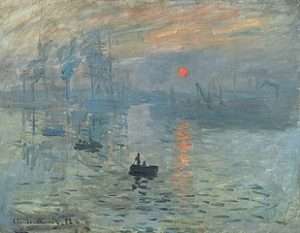
Claude Monet painted this canvas in one session early in the morning during a stay in Le Havre, the town of his childhood, with his wife and son, choosing one of his favorite themes, a port symbol of the industrial revolution of the 19th century. century and inspired by seascapes, rising suns and sunset.
-
Origin – History of Impressionism
Impressionism emerged in the context of a rapidly changing society and artistic landscape in 19th-century France. It was a response to the strict rules and academic traditions upheld by the official art institutions of the time, such as the Académie des Beaux-Arts. The Academy of Fine Arts, so called since 1816, is one of the five academies which form the Institut de France, also made up of the French Academy, the Academy of Sciences, the Academy of Inscriptions and Belles- Letters and the Academy of Moral and Political Sciences. It is a descendant of the royal academies established in the 17th century, it is today, like the other academies, endowed with a special status which allows it to administer itself freely.
-
The National School of Fine Arts
The Beaux-Arts de Paris is both a place of training and artistic experimentation, exhibitions and conservation of historical and contemporary collections and a publishing house. Heir to the Royal Academies of Painting and Sculpture founded in the 17th century by Louis XIV with Mazarin in 1648, was dissolved by the Convention in 1793. Under the Empire, the Academic School and the Academy of Architecture merged into a single institution, giving birth to the School of Fine Arts. The National School of Fine Arts, placed under the supervision of the Ministry of Culture, has the primary aim of training high-level artists. It occupies an essential place on the contemporary art scene. In accordance with the educational principles that have always been used at the Beaux-Arts, training is provided in workshops, under the guidance of renowned artists.
Precursors to Impressionism
-
Romanticism and Realism
Before the advent of Impressionism, Romanticism and Realism dominated the art scene in Europe. Romanticism celebrated emotion, nature, and individualism, while Realism aimed to depict everyday life with accuracy and detail. Both movements laid the groundwork for the development of Impressionism.
-
Influence of Photography
The invention of photography in the early 19th century had a profound impact on the practice of painting. With the ability to capture precise details and moments, photography challenged artists to explore new ways of representing reality. This influence can be seen in the emphasis on capturing fleeting moments and spontaneous scenes in Impressionist paintings.
Emergence of Impressionism
-
History of Impressionism Key Artists
Impressionism was pioneered by a group of artists who rebelled against the traditional methods taught in art schools. Notable figures include Berthe Morisot, Claude Monet, Edouard Manet, Gustave Caillebotte, Paul Cézanne, Edgar Degas, Pierre-Auguste Renoir, and Camille Pissarro. These artists formed the core of the Impressionist movement and exhibited together in independent shows. Within Paris museums and around Paris, you can appreciate the Impressionnist art in Paris.
-
Salon de Refusés
The rejection of Impressionist works by the official art establishment led to the establishment of alternative exhibition venues, such as the Salon des Refusés. The Salon des Refusés opened in Paris on May 15, 1863 alongside the official Salon and exhibited, in twelve rooms of the Palais des Champs-Élysées, annex of the Palais de l’Industrie, 1,200 works of artists by Napoleon III under the council of Viollet-le-Duc. The emperor judged that the official jury was too harsh, the latter having refused 3,000 works out of the 5,000 presented to him2 and Viollet le Duc, fighting against the Academy of Fine Arts, wanted an artistic revolution adapted to the world modern. This Salon is one of the illustrations of the emergence, in the second half of the 19th century, of an artistic modernity, in opposition to official taste.
-
First exhibition in the History of Impressionism
It was April 15, 1874, in the former workshops of the photographer Nadar, boulevard des Capucines in Paris. Berthe Morisot, Edouard Degas, Claude Monet and Auguste Renoir came together in the form of a cooperative limited company to open the first impressionist exhibition, a movement that would forever change the course of art history. Originally, this exhibition had no official title: it was the art critics who, afterwards, through the press, called this event “the Exhibition of the Impressionists”. The word impressionism is the derogatory name which was popularized by a journalist, Louis Leroy, and which was imposed, very often against the opinion of the artists themselves.
Characteristics of Impressionism
-
Techniques and Style
Impressionist artists employed innovative techniques such as broken brushwork and a focus on capturing the effects of light and atmosphere. They often painted outdoors, or en plein air, to capture the changing conditions of nature directly onto the canvas.
-
Focus on Light and Color
Central to Impressionism was the exploration of light and color as primary elements of painting. Artists experimented with the use of complementary colors and short brushstrokes to convey the transient effects of light on the natural world.
Impact of History Impressionism
-
Criticism and Reception
Initially, Impressionist works were met with skepticism and criticism from both the public and art critics. The loose brushwork and unconventional subject matter were seen as a departure from traditional artistic standards. However, over time, Impressionism gained acceptance and recognition as a groundbreaking artistic movement.
-
Influence on Modern Art
The impact of Impressionism extended far beyond the 19th century and laid the groundwork for modern art movements such as Post-Impressionism with Suzanne Valadon, Van Gogh, Fauvism with Matisse, Expressionism with Modigliani, Surrealism with Dali, and Cubism with Picasso. Its emphasis on subjective experience and the portrayal of everyday life paved the way for new approaches to artistic expression up to contemporary art and abstraction with Morris Louis, Sam Francis, Rothko, Kandinsky.
Famous Artists from History Impressionism
- Edouard Manet
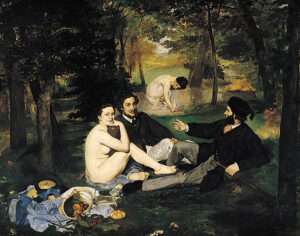
Édouard Manet was a French modernist painter. He was one of the first 19th-century artists to paint modern life, as well as a pivotal figure in the transition from Realism to Impressionism.
- Claude Monet
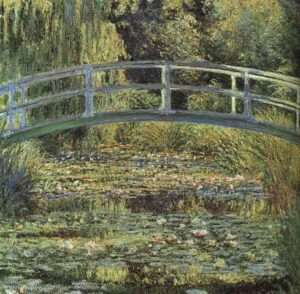
Claude Monet is perhaps the most famous Impressionist painter, known for his series of paintings depicting water lilies in Giverny day trip from Paris , haystacks, and the Rouen Cathedral. His mastery of color and light captured the essence of the natural world in a way that was revolutionary for its time.
- Edgar Degas
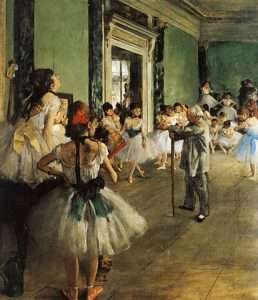
Edgar Degas loved painting ballet dancers, horse races, and everyday scenes of Parisian life. He experimented with composition and perspective, often cropping his figures in unusual ways to create dynamic and evocative compositions.
- Pierre-Auguste Renoir
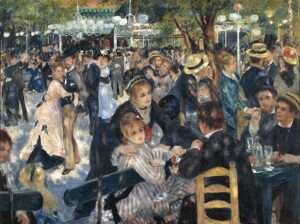
Pierre-Auguste Renoir was celebrated for his lush and sensual portraits, as well as his vibrant scenes of leisure and entertainment. His paintings exude warmth and vitality, capturing the joys of everyday life with a sense of spontaneity and charm.
Impressionism History and Art Academy Conventions
-
Techniques and Approaches
Impressionist painters employed innovative techniques to convey the sensory experience of a moment. Brushwork was often loose and gestural, imparting a sense of movement and spontaneity to their compositions. Color played a central role in impressionism, with artists using vibrant hues and juxtapositions to evoke mood and atmosphere. In contrast, art academy painters adhered to prescribed methods of rendering form and space, often favoring polished surfaces and precise detail.
-
History of Impressionism – Relationship with Nature
Impressionists embraced the natural world as a primary source of inspiration. Then, they are capturing the transient effects of light and atmosphere en plein air (outdoors). Their paintings reflected the immediacy of perception, with an emphasis on capturing the momentary impressions of a scene. In contrast, the art academy upheld ideals of beauty and harmony, often idealizing nature through classical compositions and allegorical themes.
-
Perception of Light and Shadow
One of the defining characteristics of impressionism is its exploration of light and shadow. Impressionist painters sought to convey the shifting nuances of light through color and brushwork. Indeed, they are capturing the ephemeral quality of natural illumination. In contrast, the art academy traditionally approached light as a means of modeling form, using chiaroscuro (light dark) to create volume and depth within a composition.
-
Influence on Artistic Expression
The impact of impressionism reverberated throughout the art world, challenging traditional notions of representation and perception. Its emphasis on individual interpretation and subjective experience paved the way for modern art movements. From fauvism with Henri Matisse to abstract expressionism with Kandinsky, Gauguin, Munch. Despite this, the principles of the art academy persisted, influencing artistic education and institutional practices.
-
Contemporary Interpretations and Relevance
In contemporary art, echoes of impressionism still inspire artists who continue to explore light, color, and spontaneity in their work. While some embrace impressionist techniques as a means of personal expression, others integrate elements of both impressionism and academic tradition into their practice. The ongoing dialogue between these two approaches reflects the enduring relevance of their respective principles in shaping artistic discourse.
History of Impressionism
Discover the history of Impressionism. It represents a pivotal moment in the evolution of Western art. Through its innovative techniques and emphasis on capturing the essence of fleeting moments, Impressionism challenged the conventions of its time. Indeed, it continues to inspire artists and art lovers alike.
Finally, discover PARIS BY EMY bespoke Paris Tour Package. It includes museum private tour, walking private tour guide or tours with private driver services within or outside Paris.
Emy,

